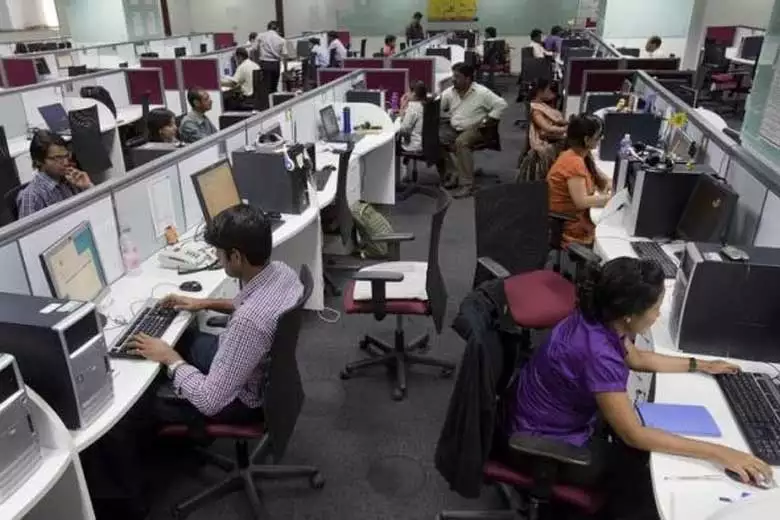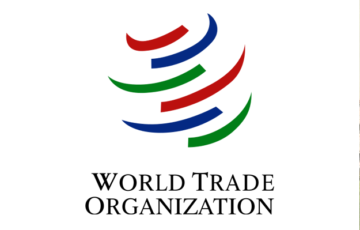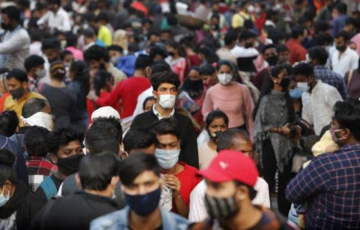SERVICE SECTOR
- The service sector encompasses a wide array of services including insurance, real estate, professional services, financial services, trade, hotels, transportation, communication, storage, broadcasting services, public administration, defense, and more. It’s the sector’s diversity and broad reach that make it essential to the global economy, offering employment opportunities, fostering innovation, and facilitating trade and commerce across borders.
Economic Survey 2022-23 Insights
- The latest Economic Survey provides a comprehensive look at the service sector’s performance, particularly noting its recovery in FY22 with an 8.4% growth year on year, bouncing back from a 7.8% contraction the previous fiscal year. This rebound is particularly noteworthy given the global challenges faced during this period. India’s positioning as one of the top ten service-exporting countries in 2021, with an increase in its share of global commercial services exports from 3% in 2015 to 4% in 2021, underscores the sector’s robustness and potential for growth.
Factors Fueling the Sector’s Growth
- High-Income Elasticity of Demand: There’s a higher demand for services as income increases, indicating that the sector benefits significantly from economic growth.
- Structural and Technical Changes: Innovations and outsourcing opportunities have made services more accessible and cost-effective globally.
- The IT Revolution: Technology advancements have revolutionized service delivery, making it possible to offer services remotely and efficiently.
- Economic Reforms of 1991: These reforms opened up India’s economy, boosting demand across sectors, including services, and enabling rapid growth, especially in financial services and infrastructure.
Champion Services Sectors Initiative
- The government has identified 12 key sectors within the service industry as “Champion Services Sectors.” These sectors, which include tourism, medical value travel, transportation, accounting, and education services, among others, are earmarked for development to enhance India’s competitive edge globally. A dedicated fund of Rs. 5000 crores has been proposed to support these sectors, aiming to increase jobs, GDP contribution, and service exports.
Champion Services Sector Scheme
- Under the Department of Commerce, the Champion Services Sector Scheme (CSSS) aims to address sector-specific and cross-cutting issues like regulatory reforms, skill development, and data protection. With a budget of Rs.3369.75 Cr for the years 2019-20 to 2023-24, the scheme focuses on increasing productivity, competitiveness, and export capabilities of the identified sectors, thereby contributing to job creation and economic growth. A three-tier monitoring mechanism ensures the effective implementation and oversight of the scheme.
Service Sector Performance in India
- The service sector has emerged as a cornerstone of India’s economic progress, marking significant contributions to the country’s Gross Value Added (GVA) and showcasing robust growth patterns. This sector encapsulates a wide range of services including information technology, finance, healthcare, tourism, and education, among others. In the financial year 2022, the service sector’s remarkable performance has been a testament to its resilience and dynamic nature, especially in the face of global challenges.
Economic Impact and Growth
Contribution to Gross Value Added (GVA)
- The service sector’s contribution to India’s GVA stood at 53% at current prices in FY22, up to January 2022, as indicated by the economic survey of 2021-22. This significant contribution underscores the sector’s pivotal role in the overall economic structure of the country, highlighting its importance in driving economic growth.
Growth Projections
- For FY23, the First Advance Estimates predicted a 9.1% growth in the service sector’s GVA. This growth is particularly noteworthy in the contact-intensive services sector, which is expected to see a 13.7% increase. Such figures not only reflect the sector’s robust recovery post-pandemic but also its potential to sustain and enhance economic momentum.
Global Context
World Services Trade
- In the second quarter of 2022, the volume of world services trade surpassed its pre-pandemic peak. This resurgence was supported by increased spending in travel, information and communication technology (ICT), and financial services. The trend was expected to continue into the third quarter, indicating a strong global demand for services.
Tourism Sector
Performance and Prospects
- According to the United Nations World Tourism Organization’s World Tourism Barometer (November 2022), international tourism showed significant recovery in January-September 2022. India, with its diverse geographical landscapes and specialized travel services, remains a key player in this revival. The country offers a plethora of tourism options ranging from eco-tourism and heritage tourism to adventure and medical tourism, contributing significantly to economic growth and job creation.
Medical Tourism
- India’s position as a preferred destination for medical tourism was reinforced by its ranking in the Medical Tourism Index FY21, where it was placed 10th among the top 46 countries. This recognition highlights India’s competitive advantage in offering high-quality medical services at competitive prices.
Economic Contributions and Rankings
- Despite a decline in the growth rate of foreign tourist arrivals in 2020-21, the tourism sector’s contribution to foreign exchange earnings remained substantial, with earnings of 6.96 billion dollars in the first half of 2020. India’s ranking in the Travel and Tourism Index 2021 at 54th place further underscores the need for strategic improvements to enhance its global competitiveness.
Travel and Tourism Competitiveness
World Travel and Tourism Index
- The World Travel and Tourism Competitiveness Index, released biennially by the World Economic Forum (WEF), provides a comprehensive assessment of the T&T competitiveness of 140 economies. India’s rank of 54th in 2021 calls for focused efforts to improve its environment, policy conditions, infrastructure, and natural and cultural resources to climb higher in future rankings.
Celebratory and Institutional Frameworks
World Tourism Day
- Celebrated on September 27th since 1980, World Tourism Day marks the adoption of the Statutes of the United Nations World Tourism Organization (UNWTO). The day serves as an opportunity to highlight the significance of tourism and its potential to contribute to sustainable and responsible travel practices. The theme for World Tourism Day 2022, “Rethinking Tourism,” reflects a global call to innovate and transform the tourism sector in the wake of contemporary challenges.
Dharamshala Declaration 2022
- The Dharamshala Declaration 2022, released at a national tourism conference in Himachal Pradesh, underscores India’s commitment to promoting sustainable and inclusive tourism development. This declaration is a step forward in aligning India’s tourism policies with global best practices and enhancing its appeal as a leading tourist destination.
Information Technology and Business Process Management Services
India’s Information Technology and Business Process Management (IT-BPM) sector is a cornerstone of its economy, contributing significantly to the nation’s GDP and employment. This sector, along with the communications and ports and shipping services, showcases India’s growing influence and capabilities on the global stage.
Information Technology and Business Process Management (IT-BPM) Services
Economic and Employment Impact
- Contribution to GDP: The IT-BPM industry in India represents 8% of the country’s GDP, highlighting its significant role in the economic landscape.
- Employment: With 3.9 million people employed, it stands as the largest employer in the private sector, underscoring the sector’s vital role in job creation.
Digital Infrastructure and Usage
- Mobile and Internet Penetration: India boasts 1.23 billion mobile phones and 770.5 million internet users, with data consumption rates among the highest and most affordable globally.
- Smartphone Adoption: Over 500 million smartphone users, with three-quarters having internet access, position Indians among the world’s top app downloaders.
- Telecommunications: India’s status as the second-largest in telephone connections and a significant internet subscriber base underlines its strong telecommunications infrastructure.
Innovation and Growth
- Unicorn Hub: Ranking third globally, India has created a vibrant ecosystem for startups, reflected in its total valuation of USD 168 billion unicorns.
- IT Hardware Production: Expected to reach 3 trillion rupees in four years, with domestic value addition projected to increase significantly, indicating robust growth in hardware production.
Sector Composition
- The IT-BPM sector comprises four sub-sectors: IT Services (51.1%), Software Product and Engineering Services (20.8%), Business Process Management (19.8%), and Hardware (8.3%).
Recent Trends
- Revenue Growth: The IT-BPM sector, excluding e-commerce, saw revenues reaching US $194 billion, growing by 2.26% and adding 138,000 employees in the 2020-21 period according to NASSCOM.
- Gender Diversity: In 2018, the IT-BPM workforce was over 34% female, highlighting the industry’s role in promoting gender diversity.
- Startup Ecosystem: India’s emergence as the third-largest startup ecosystem demonstrates its innovation and entrepreneurial spirit.
India BPO Promotion Scheme
- Launched in 2014, this scheme aims to incentivize BPO operations in India, with the Software Technology Park of India as the nodal agency, reflecting the government’s support for sectoral growth.
Communication Sector
Telecommunications
- Market Size: India is the world’s second-largest telecommunication market, with a significant subscriber base and a high percentage of wireless market share.
- Rural vs. Urban Penetration: The difference in teledensity between rural and urban areas indicates potential growth sectors.
- FDI and Revenue: An increase in the FDI cap to 100% and telecom’s position as a top revenue earner for the government underscore the sector’s economic importance.
Ports and Shipping Services
Growth and Efficiency
- Ship Ownership and Major Ports: The increase in ships owned by Indian companies and the strategic importance of major ports emphasize India’s maritime strength.
- Efficiency Indicators: The significant reduction in Turn Around Time (TAT) for ships highlights improvements in port operations efficiency, with global comparisons illustrating potential areas for further enhancement.
Turn Around Time (TAT)
- Importance of TAT: TAT is a critical measure of port efficiency, with variations across ports indicating differing levels of operational efficiency.
Current Challenges in Service Sector
Impact of the Pandemic
- The COVID-19 pandemic severely impacted India’s service sector, with a notable contraction in the fiscal year 2020-21. Sub-sectors such as trade, hotels, transport, communication, and broadcasting faced significant declines due to lockdowns and restrictions, showcasing the sector’s vulnerability to global health crises.
Employment in Services
- Despite the service sector’s substantial contribution to India’s GDP, it has not generated the expected quantity or quality of employment. There’s a mismatch between the sector’s growth and job creation, highlighting the need for enhanced employment opportunities within this sector.
Absence of Policy for Inclusive Growth
- The growth of the service sector has been hampered by a lack of coordinated and inclusive policy-making. Outdated regulations and barriers to foreign direct investment further exacerbate this issue, affecting the sector’s overall competitiveness and growth prospects.
Market Access Barriers
- Indian service providers face significant market access barriers in foreign markets, including visa restrictions and licensing challenges. These barriers limit the global reach and competitiveness of India’s service sector.
Government Initiatives
Structural Reforms
- In response to these challenges, the Indian government has introduced several structural reforms, including deregulation of the space sector, easing IT-BPO sector regulations, and implementing consumer protection rules for e-commerce.
Health Sector Initiatives
- Significant efforts have been made to improve healthcare accessibility and affordability, with the establishment of new medical colleges and Ayushman health and wellness centres.
Skill Development and Employment
- Programs like the Mahatma Gandhi National Fellowship and PMKVY 3.0 focus on enhancing skill development and creating employment opportunities in the services sector.
Production Linked Incentive (PLI) Scheme
- To reduce reliance on imports and boost domestic manufacturing, the PLI scheme encourages production in sectors like telecom and networking.
International Cooperation
- Efforts to foster international cooperation, such as dialogues and agreements with countries like the United Kingdom and Australia, aim to enhance service trade opportunities and digital economy collaboration.
UPSC PREVIOUS YEARS QUESTIONS
1. Normally countries shift from agriculture to industry and then later to services, but India shifted directly from agriculture to services. What are the reasons for the huge growth of services vis-à-vis industry in the country? Can India become a developed country without a strong industrial base? (2014)










